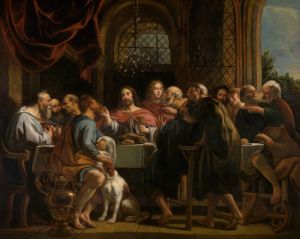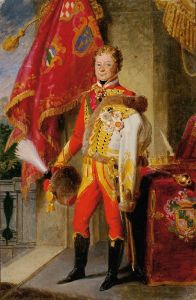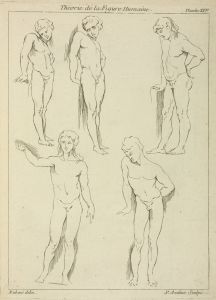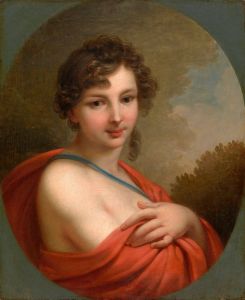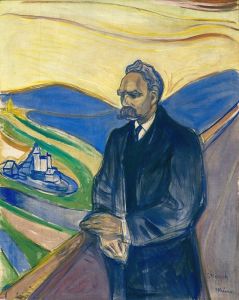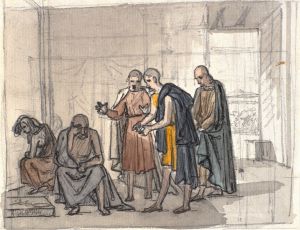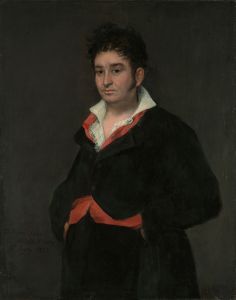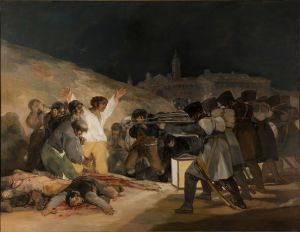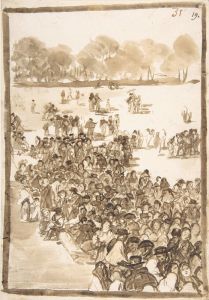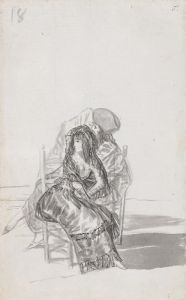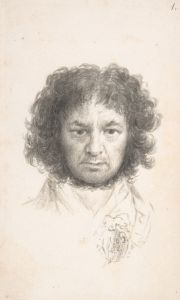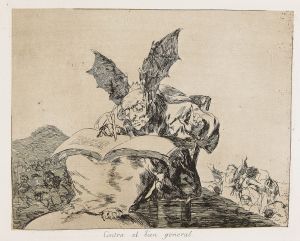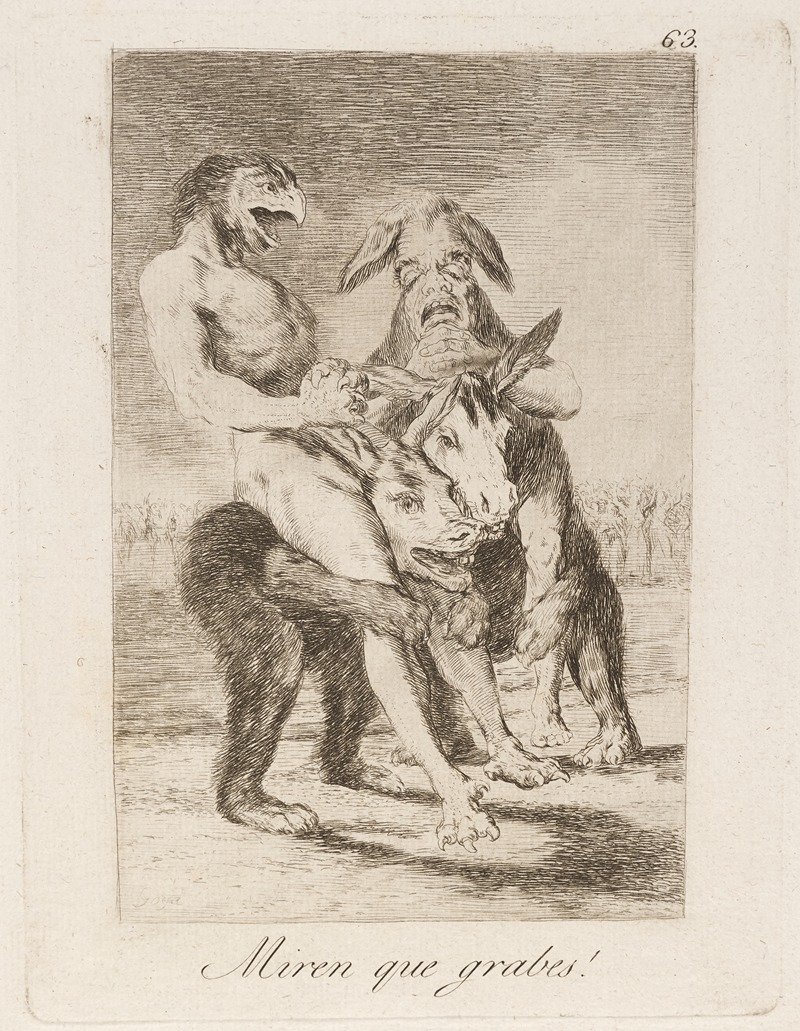
Miren que grabes!
A hand-painted replica of Francisco de Goya’s masterpiece Miren que grabes!, meticulously crafted by professional artists to capture the true essence of the original. Each piece is created with museum-quality canvas and rare mineral pigments, carefully painted by experienced artists with delicate brushstrokes and rich, layered colors to perfectly recreate the texture of the original artwork. Unlike machine-printed reproductions, this hand-painted version brings the painting to life, infused with the artist’s emotions and skill in every stroke. Whether for personal collection or home decoration, it instantly elevates the artistic atmosphere of any space.
Francisco de Goya's "Miren que grabes!" is one of the many works that form part of his renowned series "Los Caprichos," a collection of 80 aquatint prints created in 1797-1798 and published in 1799. "Los Caprichos" is a critical and satirical exploration of Spanish society, addressing themes such as superstition, ignorance, and the follies of human behavior. Goya, through these prints, sought to critique the social, political, and religious structures of his time.
"Miren que grabes!" is the 73rd print in the series. The title can be translated to "Look how solemn they are!" or "Look how serious they are!" This particular print, like many others in the series, employs a combination of etching and aquatint techniques, which Goya mastered to create stark contrasts and intricate details. The use of light and shadow in "Miren que grabes!" is characteristic of Goya's style, allowing him to emphasize the grotesque and absurd nature of the scene depicted.
The imagery in "Miren que grabes!" is emblematic of Goya's ability to blend realism with fantasy. The print features figures that appear to be engaged in a solemn or serious activity, yet the context and exaggerated expressions suggest a critique of their pretentiousness or self-importance. This duality is a hallmark of Goya's work, where the surface meaning often belies a deeper, more critical commentary on human nature and societal norms.
Goya's "Los Caprichos" series was groundbreaking for its time, as it diverged from traditional artistic themes and embraced a more personal and introspective approach. The series was initially met with mixed reactions; while some appreciated its innovative style and bold commentary, others were unsettled by its dark and often unsettling themes. Despite this, "Los Caprichos" has since been recognized as a significant contribution to the art world, showcasing Goya's unique vision and his ability to capture the complexities of human behavior.
The creation of "Los Caprichos" coincided with a tumultuous period in Spanish history, marked by political instability and social upheaval. Goya himself was deeply affected by the events of his time, including the Enlightenment's challenge to traditional authority and the subsequent backlash from conservative forces. These influences are evident in the satirical and often cynical tone of the series.
"Miren que grabes!" and the other prints in "Los Caprichos" reflect Goya's disillusionment with the society around him. Through his art, he sought to provoke thought and encourage viewers to question the status quo. Today, "Los Caprichos" is celebrated for its innovative use of printmaking techniques and its enduring relevance as a social critique.
Goya's work, including "Miren que grabes!", continues to be studied and admired for its technical mastery and its profound insights into the human condition. The series remains a testament to Goya's legacy as one of the most important and influential artists of his time, whose work transcends the boundaries of traditional art to engage with the complexities of society and human nature.





